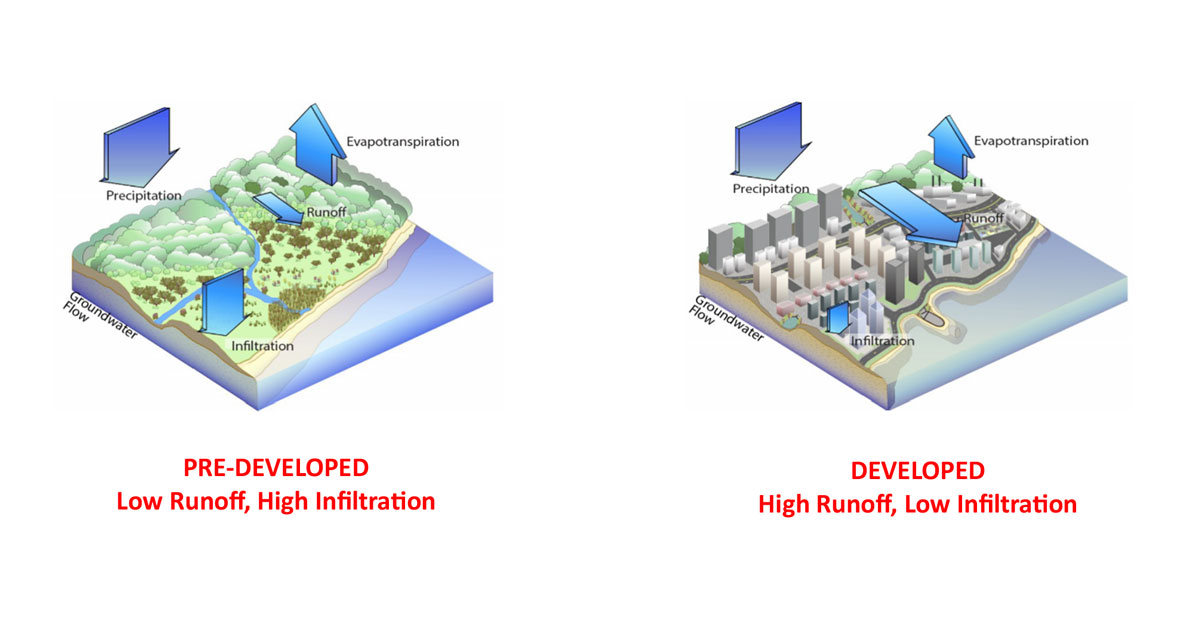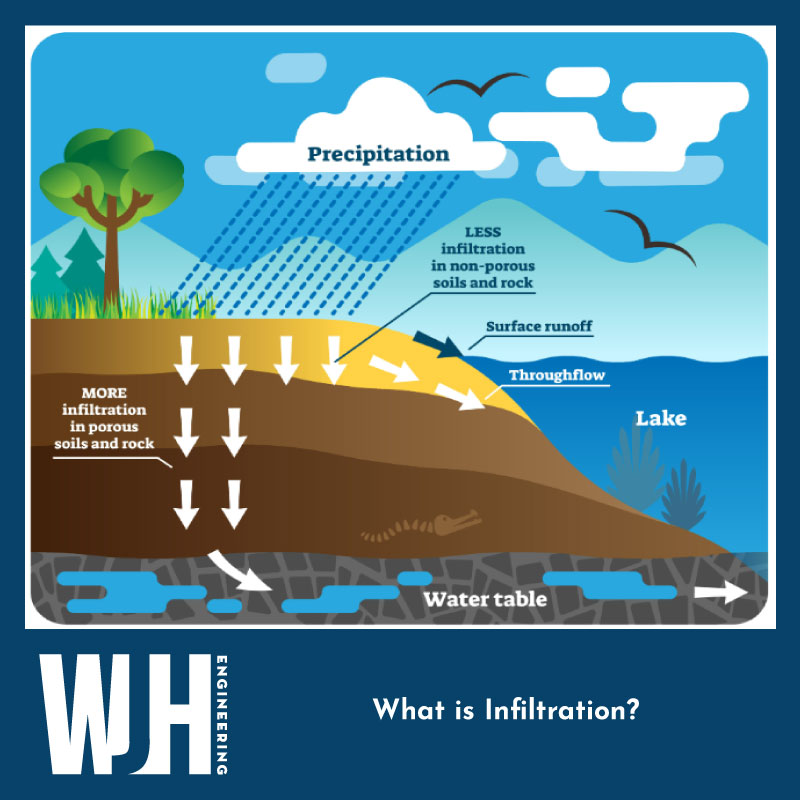The New Jersey Department of Environmental Protection (NJDEP) focuses on three major components for stormwater management systems. The first component is quantity, which refers to the amount of stormwater that a system can collect. The second component is quality, which refers to the treatment of said stormwater. And the final component is infiltration, which refers to a system’s ability to distribute stormwater into the ground beneath it.
Any time that it rains, a fraction of that stormwater is absorbed by the soil it lands on. This restores the underground water table, which plays an essential role in replenishing our rivers and delivering water to nearby plant life. When a parcel of land is developed, we block access to that underground water table. That is why infiltration is a vital part of stormwater management. Without it, stormwater cannot reach the underground water table, disrupting the natural hydrologic cycle.
Here at WJH Engineering, in accordance with NJDEP regulations, we develop our projects to maintain or exceed pre-development infiltration rates, protecting the hydrologic cycle. This is achieved by various stormwater BMP’s (Best Management Practices) such as infiltration basins, which can bring a nice aesthetic to a project, or by underground pipe networks and porous pavement systems, which are more discreet.
A poor design will cost you more money in the long run, so we work hard to ensure that your BMP’s are properly designed to function as intended. An important consideration is an issue called groundwater mounding. When water infiltrates, the elevation of groundwater increases, which could impact or flood nearby basins, basements or properties. Thankfully, our engineering team is experienced in mitigating this issue to provide you with peace of mind that your project will work.
No matter your preference or constraint, our experienced team here at WJH Engineering will work diligently to provide you with the solution you are looking for.



